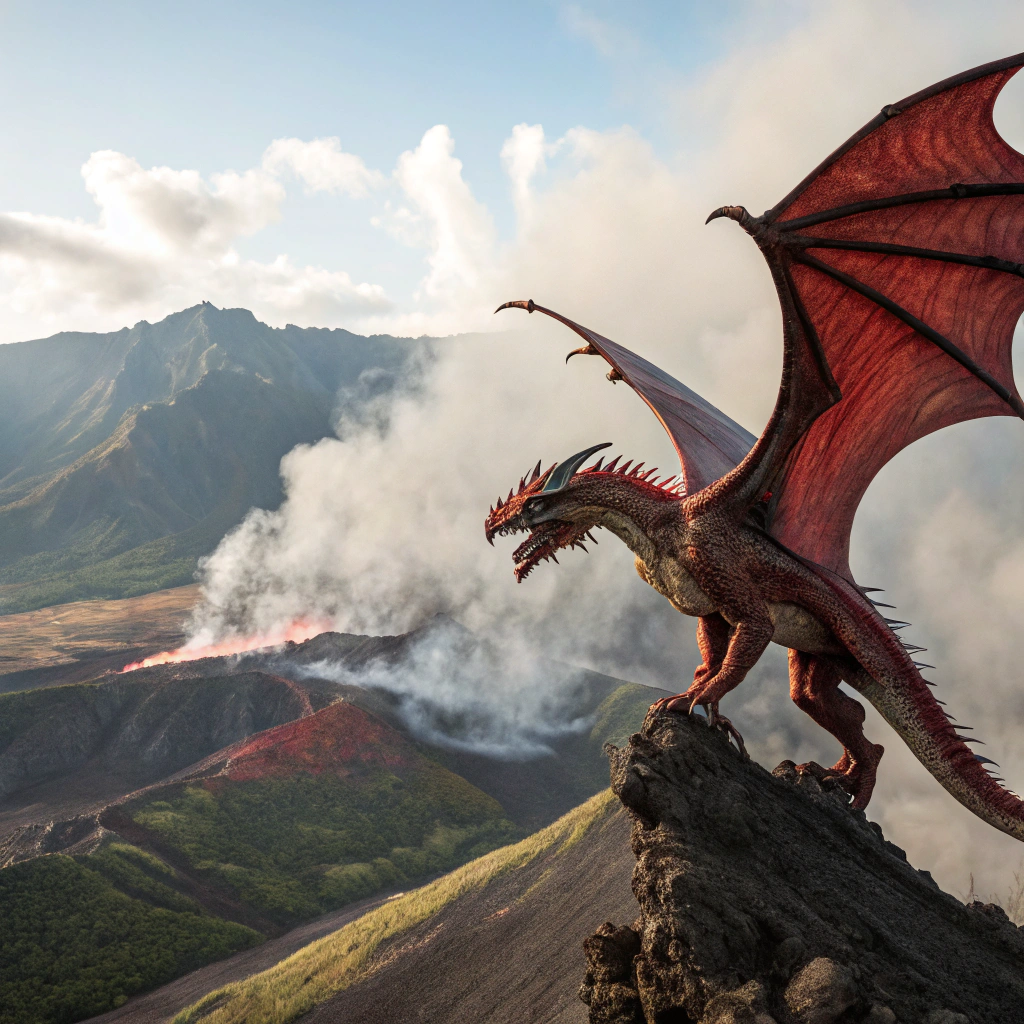
Red Chromatic Dragon Name Generator
Name: Ignitus
Meaning Origin Description Fiery One Latin Master of burning flamesName: Tyrannox
Meaning Origin Description Tyrant King Latin/Custom Imperious ruler of mountainsName: Infernus
Meaning Origin Description Hell-Fire Latin Lord of scorching infernosName: Pyros
Meaning Origin Description Fire Greek Wielder of crimson flamesName: Drakonox
Meaning Origin Description Dragon King Greek/Custom Supreme ruler of the peaksRed Chromatic Dragon Details
| Habitat | Mountains, volcanoes, and other hot environments |
| Breath weapon | Cone of fire |
| Usual alignment | Chaotic Evil |
Red Chromatic Dragons exhibit distinctive morphological and behavioral characteristics that set them apart from other draconic species. These apex predators possess massive frames reaching lengths of 60-120 feet, with wingspans nearly double their body length. Their scales display vibrant crimson hues that deepen with age, featuring protective overlapping patterns that can deflect significant damage.
Notable physiological adaptations include:
- Internal flame glands that produce and expel superheated breath reaching temperatures of 1800°F
- Enhanced olfactory capabilities specifically attuned to detecting precious metals and gems
- Specialized heat-resistant scales and membranes
- Four powerful limbs with razor-sharp talons
- Pronounced horn structures and facial spikes
These territorial creatures establish domains in mountainous regions, particularly around volcanic formations that match their temperature tolerance and provide suitable nesting conditions. They create extensive lairs within mountain peaks or volcanic caves, often spanning multiple chambers and tunnels.
Behaviorally, Red Chromatic Dragons display:
- Extreme territorial aggression
- High intelligence with manipulative tendencies
- Pronounced hoarding instincts focused on precious metals and gems
- Dominant social hierarchies
- Solitary habits except during mating seasons
Their diet consists primarily of large mammals, though they will consume any prey when hungry. They have been observed using tactical hunting methods, including ambush techniques and strategic use of terrain.
Regarding temperament, these dragons consistently demonstrate:
- Overwhelming pride and arrogance
- Quick to anger and slow to forgive
- Strong desire for dominance and control
- Cruel tendencies toward perceived inferiors
- Calculated intelligence in pursuing goals
Typical alignment trends strongly toward chaotic evil, with individuals showing consistent patterns of destructive and domineering behavior. They frequently engage in activities that establish and maintain power over their claimed territories and any inhabitants therein.
Their life cycle spans several centuries, with individuals becoming more powerful and territorial as they age. Young specimens show marginally less aggressive tendencies but develop increasingly hostile behaviors as they mature and establish their territories.
These dragons function as ecosystem engineers, significantly impacting their habitats through both their physical presence and behavioral patterns. Their activities often result in the displacement or elimination of other large predators within their chosen territories.
